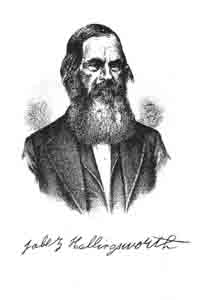Page
442
These unfounded charges against a peaceful and harmless sect were widely promulgated and received with ready ears, and in August, 1810, a mob was raised and marched against the Shakers. Unfortunately, it has always been too easy, especially among a backwoods people, to convince the multitude that they are justified in taking into their own hands the redress of their own grievances, and in all communities there are always too many who are ready to assist in riotous proceedings. If there is any innate meanness in a man, it is most likely to display itself in the time of a mob. The men who composed the mob were collected from regions around Union Village, a considerable proportion, it is said, being from Dick’s Creek, in which region its leader preached. It is said that none who participated in the riotous proceedings were from Lebanon, with the exception of one elderly woman, a member of the Seceder Church from
443
444
445
North Carolina. In the crowd were a number of women, more fierce for the destruction of the Shakers than any of the men. There were some hundreds of persons collected together by this mob. According to the accounts of the Shakers, there were 500 armed men, exclusive of those drawn to the scene by curiosity, which is probably an exaggerated estimate. A number of cool-headed and law-abiding men, having a great abhorrence of mobs, went to Union Village while the mob was assembling, for the purpose of preserving the peace. Judge Francis Dunlevy, then President Judge of the Court of Common Pleas, read the riot act, and, in the name of the State, commanded them to disperse. Joshua Collett and Matthias Corwin, Sr., and other intelligent men, did all in their power to protect the Shakers from violence. These efforts were successful, and, after some parleying, the crowd slowly and angrily dispersed.
This mob, and other persecutions to which the first Shakers were subjected, as might be anticipated, benefited the society. Many persons from the neighborhoods of Lebanon, Middletown, Hamilton and more distant regions, were induced to visit them from curiosity or sympathy, and from among these visitors new converts were received. From 1810 to 1818, the accessions to the society were numerous. The following is the account given by the Shaker writers of this mob and other persecutions. It is condensed from “The Millenial Church, or United Society of Believers, commonly called Shakers,” a work first published in 1823:
“The great opposition which was raised against the testimony in the West was first instigated by the principal leaders of a class of people who styled themselves Christians, in contradistinction to all others who professed that name, under different denominations. Some of these had been distinguished leaders in the late revival; but, instead of advancing forward in that increasing work, to which the spirit of the revival had so powerfully directed them, they became the foremost in opposition, and exerted all their influence to prejudice the minds of their hearers and excite them to acts of violence. Hence arose the scenes of opposition and persecution which followed. These scenes began by opposing, molesting and disturbing the believers in their testimony and worship, by various kinds of mockery, railing and cursing, threatening, pushing, collaring, and other acts of personal abuse and insult.
“On the 27th of August, 1810, a body of 500 armed men, led on by officers in military array, appeared before the principal dwelling of the society in Union Village. This formidable force was preceded and followed by a large concourse of spectators of all descriptions of people, estimated at nearly two thousand in number, whose object was to witness the mighty conflict expected to take place between a body of 500 armed men and a few defenseless Shakers. Among the concourse were many who were friendly to the society, and whose only wish was to prevent mischief and preserve peace; but many were armed in mob array, some with guns and swords, some with bayonets fixed on poles, an others with staves, hatchets, knives and clubs. These formed a motley multitude of every description, from ragged boys to hoary-headed men, exhibiting altogether a hideous appearance. The troops having taken their station near the meeting-house, a deputation of twelve men came forward, headed by a Presbyterian preacher, Rev. Matthew G. Wallace, who acted as chief speaker, and, after making a number of unreasonable demands, stated as their principal requisition that the society should relinquish their principles and practice, mode of worship and manner of living, or quit the country. The answer of the society was mild and calm, but plain and positive: That they esteemed their faith dearer than their lives, and were determined to maintain it, whatever might be the consequences; as to quitting the country, they were upon their land, which they had purchased with their own money, and they
446
were entitled to those liberties granted by the laws of their country, including the liberty of conscience.
“the calm, peaceable and harmless deportment of the believers, together with the expostulations of a few respectable individuals, the liberty given to examine the youth reported to be held in bondage, the marks of contentment and the decent and orderly appearance of everything around, all conspired to change the sentiments and feelings of the vindictive warriors to such a degree that all withdrew without committing any abuse.”
The manuscript journals of the society show that there were other mobs in the years 1812 and 1813, and on July 31, 1817. At the last-named date, Richard McNemar opposed the forcible entrance of the riotors, and was afterward indicted by the Grand Jury for assault and battery. At the trial of the case, Mr. McNemar, as was his legal right, demanded to be heard in his own defense. He argued the case before the jury with such skill and ability that he was triumphantly acquitted.
